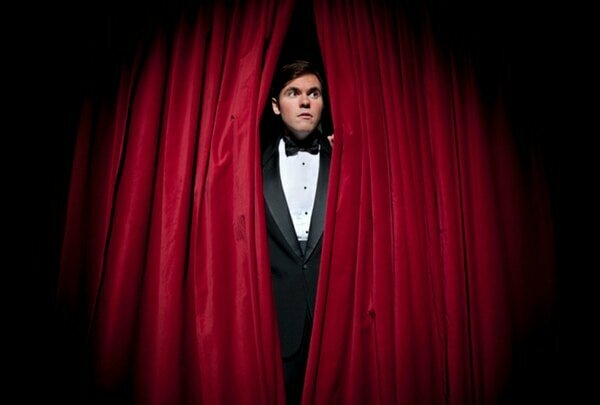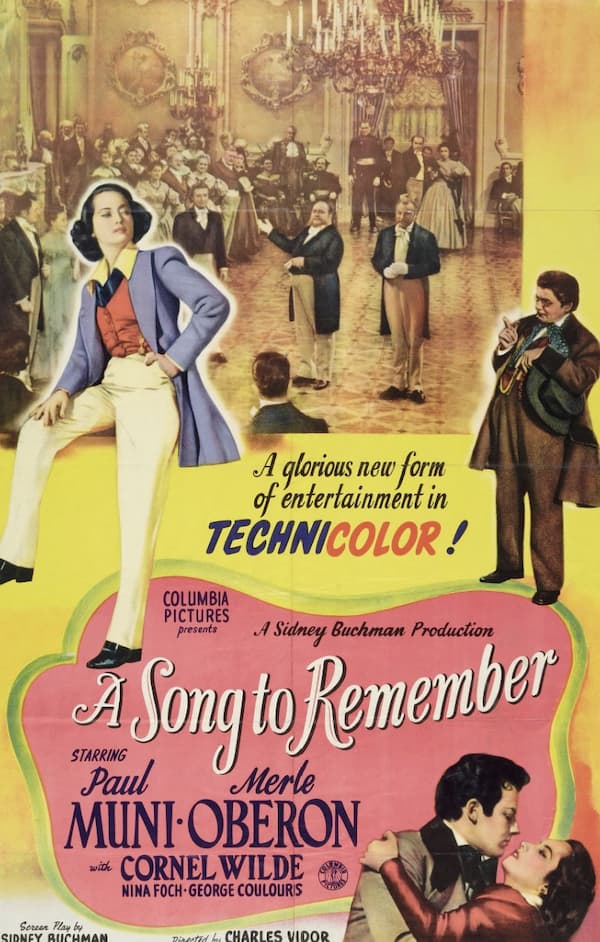Samuel Barber (1910-1981) strongly resisted experimental music trends during the 1920s. Actually, he has frequently been compared to Brahms, who was also unaffected by the fashions and dictates of his time. Both, in fact, continued to compose expressive, lyrical music in traditional forms using a basically romantic tonal language.
Samuel Barber: Souvenirs, Op. 28, I. “Waltz”
Here is how Barber described himself as a composer. “I am writing music for words, then I immerse myself in those words, and I let the music flow out of them. When I write an abstract piano sonata or concerto, I write what I feel. I’m not a self-conscious composer… it is said that I have no style at all, but that doesn’t matter. I just go on doing, as they say, my thing. I believe this takes a certain courage.”
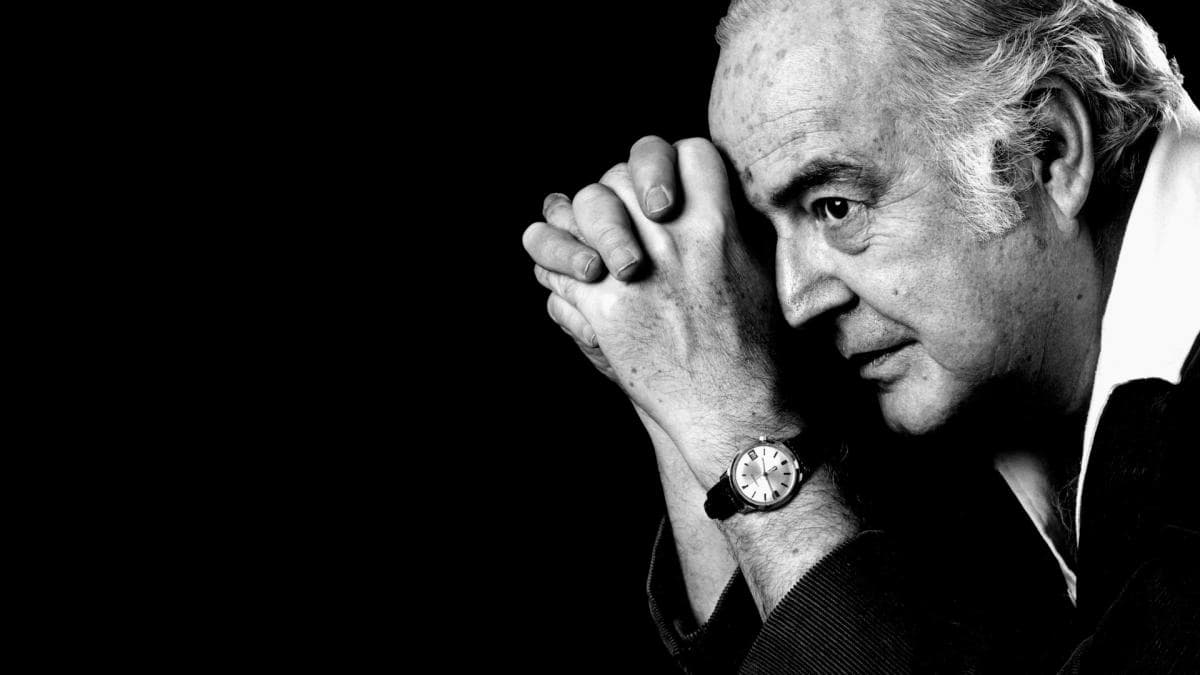
To the outside world, Barber was the face of American music. He won two Pulitzer Prizes, represented the United States in the first post-World War II international music festival, served as vice-president of the International Music Council, attended the biennial congress of Soviet composers in Moscow in 1962, and was one of a select group of composers commissioned to write music for the opening of Lincoln Centre.
Samuel Barber: Souvenirs, Op. 28, II. “Schottische” (John Browning, piano; Leonard Slatkin, piano)
In 1952, Barber started composing the Souvenirs for piano duet for his own amusement, to be played with his friend Charles Turner at the Blue Angel Bar in Manhattan. A biographer reports that Barber and his mother used to visit the Palm Court of the Plaza Hotel for tea while visiting New York city, “a fond memory from his youth that the composer tapped into when in 1952 he wrote a Suite of six duets for piano, four hands.”
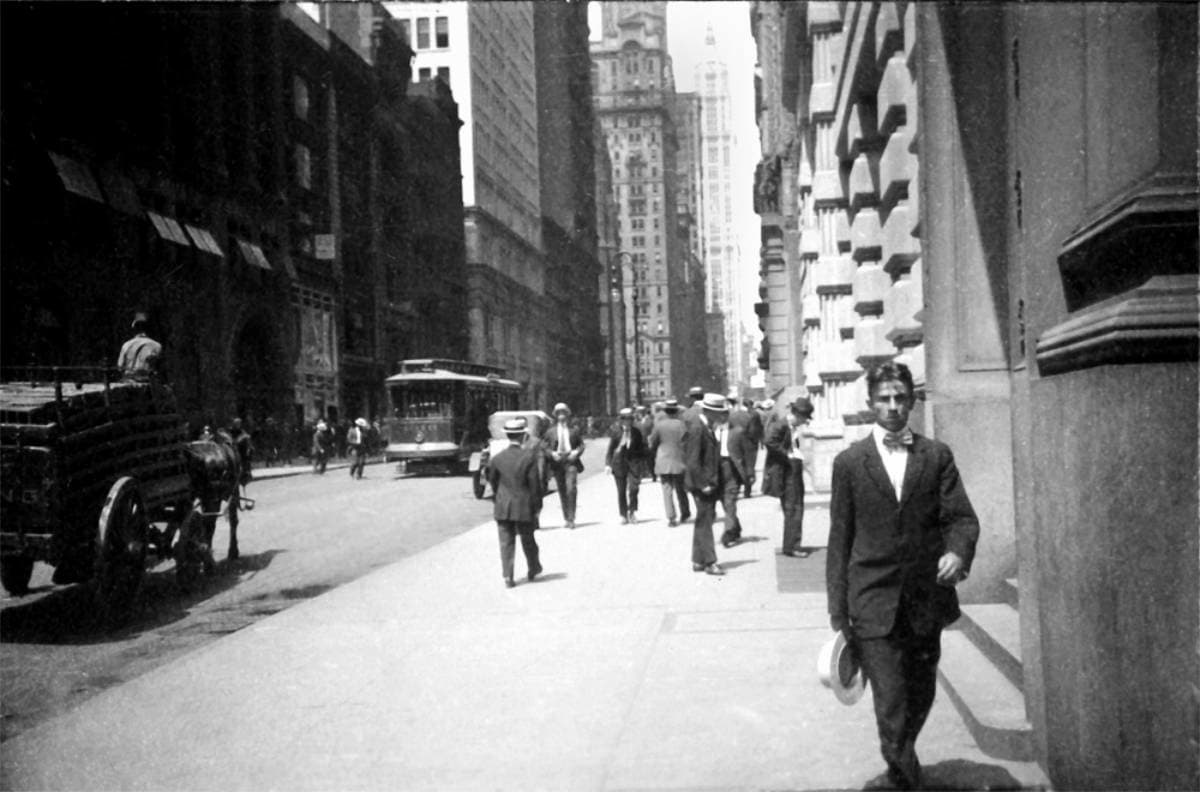
New York City, 1914
Barber and Turner would frequently play the Souvenirs to great effect at parties and social gatherings, and the original piano four-hands version was also orchestrated for a ballet. As Barber recalls, “In 1952, I was writing some duets for one piano to play with a friend, and Lincoln Kirstein suggested that I orchestrate them for a ballet. Commissioned by the Ballet Society, the suite consists of the original six movements. One might imagine a divertissement in a setting of the Palm Court of the Hotel Plaza in New York, the year about 1914, epoch of the first tangos; Souvenirs, remembered with affection, not in irony or with tongue in cheek, but in amused tenderness.”
Samuel Barber: Souvenirs, Op. 28, III. “Pas de deux” (John Browning, piano; Leonard Slatkin, piano)
Critics thought the work “airy, gracious, inventive, and light-hearted,” and described it as brief sketches and spoofs reminiscent of “a hotel hallway farce, three wall-flowers at a dance, a bedroom seduction, and an afternoon on the beach.” In the event, Souvenirs is characterised by elegant flow and charming melodic lines, showcasing Barbers ability to capture and convey unique emotions and memories.
The six pieces are distinct in their character yet collectively create a cohesive work of art. Essentially, it is a set of ballroom dances, and the opening “Waltz” communicates a sense of grace and elegance after a rather turbulent and brilliant introduction. The coda sounds the grand finale and offers magnificent sound effects. In fact, it has been compared to “an orchestra playing in unison or a ballet troupe performing in harmony and cohesion.”
Samuel Barber: Souvenirs, Op. 28, IV. “Two-Step” (John Browning, piano; Leonard Slatkin, piano)
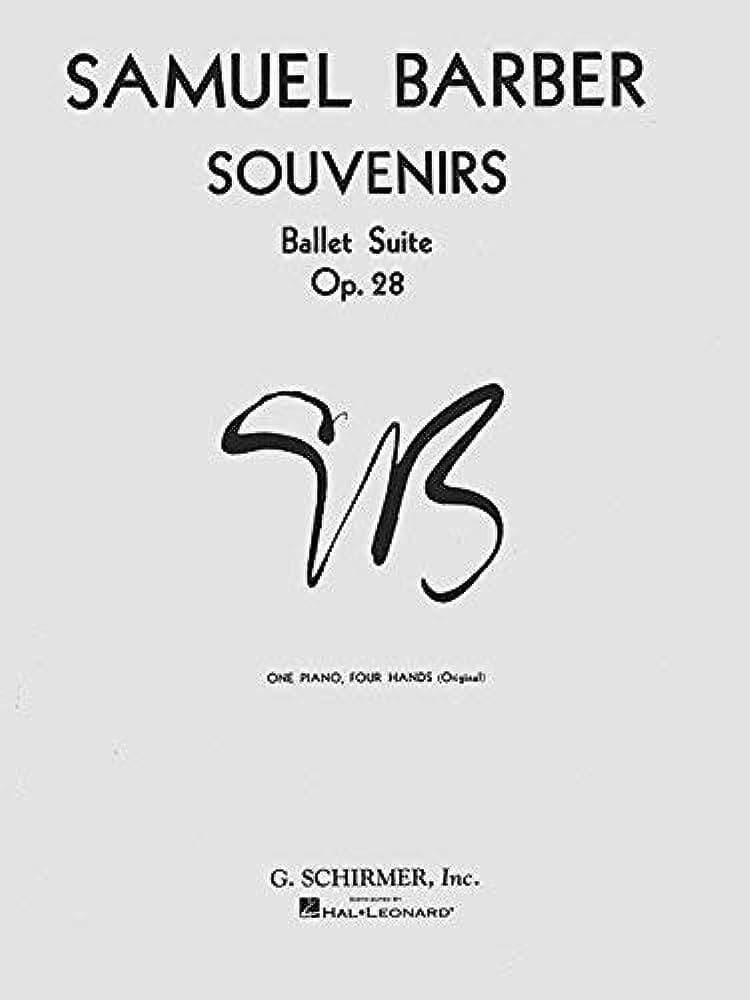
Samuel Barber’s Souvenirs
The “German Polka,” actually a slow polka of Bohemian roots gained high popularity in England during the mid-nineteenth century. On the British Isles, the dance became known as “Schottische” or “Scottish Dance.” Barber captures the spirit of the dance in two distinct sections, each with a unique character. The opening features a lively melodic line accompanied by leaping jumps, while the secondary section is much more restrained and lyrical and scored in the unusual 5/4 meter.
The slow and graceful French ballet dance “Pas de deux” is usually performed by two dancers. Barber offers a tranquil and solemn composition with two intertwining melodic lines. The music expresses a sense of melancholy and yearning, and the intricate melody creates an atmosphere of deep emotions and introspection. A scholar writes, “as the movement progresses, the music seems to capture the dancers drifting away from each other until they ultimately disappear, leaving a sense of emptiness and loss.”
Samuel Barber: Souvenirs, Op. 28, V. “Hesitation-Tango” (John Browning, piano; Leonard Slatkin, piano)

Samuel Barber’s Musical Quotation
Inspired by the infectious and passionate rhythms of Latin America, the “Hesitation-Tango” is essentially a high-energy display of enthusiasm and bodily movement. Barber captures the essence of the dance through the use of hemiola figuration and a staccato rhythm with the emphasis on the fourth beat. Barber is able to reference the exotic and alluring nature of the dance by constantly involving his melody in delicious entanglements.
The concluding “Galop” takes its bearing from a fast French country dance, and the brilliant alternation between the right and left hands brings this dance set to a passionate and brilliant conclusion. Souvenirs requires a high degree of technical proficiency from both performers. The piano solo edition showcases the intricacies of Barber’s compositional style as overlapping and interweaving textures have to be navigated. With its inherent lyricism and sensitivity, Barber’s musical style infuses each piece with an enchanting quality that transports the listener to a bygone era in 1914.
For more of the best in classical music, sign up for our E-Newsletter

